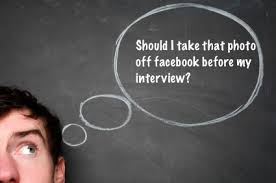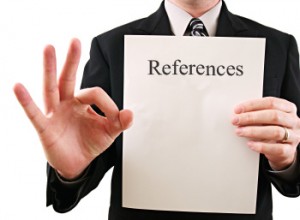Reference checking is a critical step in the hiring process because it is crucial to learn about a potential employee’s past, work experience, and workplace interactions; however, reference checking can result in wasting countless hours and manpower. Frustrating rounds of “phone tag” waste valuable time. With RefLynk, these problems are solved. Our automated software is candidate driven employing SMS text messaging and emailing. This means no more phone tag while trying to reach different references because RefLynk is a fully automated system. Texts and emails are sent to references without the user having to do each one individually. This eliminates a lot of wasted time. Since the system automatically sends reminders, it requires no additional work on the user’s part. Reminders are continuously sent until there is a response. Responses being either a completed reference or a refusal. This guarantees that no reference is overlooked because of a lack of contact or referral response. Receiving regular reminders prompts the recipient to complete the form and return it quickly. Today’s technology dependent world dictates that people are likely to check their email and texts multiple times a day, increasing the likelihood of timely responses. Phone calls, on the other hand, can easily go unanswered or unreturned. Each reminder is automatically sent out to the references every 24 hours until responses are received. This process ensures that time is saved rather than wasted. Even though reference checking is vital and extremely important for businesses, today there is no reason for it to take an unreasonable amount of time.
So what exactly is a reference check and why is it so important? A reference check is when an employer reaches out to a job applicant's previous employers, educational contacts, and other sources to learn about the applicant’s history, work habits, and other qualifications. The evaluation of an applicant’s skills, character, and work habits is the primary focus of a reference check. An interview can only reveal a limited amount of information about a person. It is important to learn what other people have to say about the candidate. A reference check can cover leadership skills, adaptability, decision making, etc. A reference check can even ask for examples of how the candidate demonstrated specific skills in the past.
Another important aspect of a reference check is verifying the truth. The candidate can claim certain accomplishments during their last job, but a potential employer needs to be able to confirm that such claims are true. The way to do that is to ask the candidate’s past employer during a reference check. The past employer will hopefully verify applicant claims about job experience and skills. The inquiring company will then be able to compare what is said about the candidate by references to what the potential employee has claimed on their resumé. This not only ensures that the candidate is capable of performing certain tasks, but it also shows whether the candidate is truthful.
Another critical point of reference checks is gaining a better understanding of a candidate’s work relationships. It’s very tough to determine the personality of a candidate through a couple of face-to-face interviews. While one may be very successful in a field of work, it doesn’t necessarily indicate that others enjoy working with them. This is important information for recruiters to know, and is best learned through the feedback of references. A potential candidate is inherently more likely to show their best self in an interview because there is something important (the job) on the line. It is crucial to examine what co-workers have experienced when dealing with the candidate on a daily basis. This input is vital to know when making a decision about hiring. With that added information, the company can have much more confidence in the hiring decisions.
Now that we have discussed the capabilities that RefLynk possesses and why reference checks are important, we will now go into the features present that are relevant when choosing a reference-checking system. The first feature that is extremely important to look for when searching for a reference-checking company isn’t necessarily a feature at all. It is actually a compliance issue that many reference-checking systems are lacking. In order for a good reference check to happen, and for it to be valid, it has to be completed through a company or system that is FCRA compliant. Because Reflynk is considered an investigative consumer report under the Fair Credit Reporting Act, it requires clients to adhere to all requirements under the FCRA. There are six requirements in order to be FCRA compliant. They are :
Written permission must be obtained from the specific consumer, prior to receiving the consumer report.
The consumer needs to be aware of how consumer report will be used.
The information within the consumer report must be accurate.
If deciding not to hire or to terminate employment, a copy of the report must be given to the consumer along with a Pre-Adverse Action Letter and a Summary of Rights Under the FCRA.
If deciding not to hire or to terminate employment, the consumer must be given an opportunity to dispute any information within the consumer report.
If the consumer does not dispute the report, then an Adverse Action Letter has to be sent to the consumer.
RefLynk abides by all of these requirements in order to be FCRA compliant. Consumer reports include criminal background checks, references, driving history, etc. Because references are included in the list of consumer reports, it is necessary to use a FCRA compliant company. RefLynk is exactly that.
The next feature that is becoming necessary in reference checking is one that was mentioned in the beginning - the ability to use SMS text messaging and emails to conduct reference checks. In today’s fast-paced, technology-driven world, time is of the essence and texting and emailing has become almost primary communication for many people. Because of this, it is essential for businesses to make some changes to not only keep up with new technology, but to also make it easier for those using these forms of technology on a daily basis. RefLynk has done this. The system is candidate driven, so that takes countless hours off of the employer’s plate. Instead of the employer calling and reaching out to the candidate’s (future employee’s) references, the candidate is asked to input the references into the system. Once they are provided, a text and/or email will be sent to those prospective references. They will then be able to decline the reference (in which case the candidate will be asked to supply another) or will be able to quickly fill out the reference without ever having to pick up the phone. Because the candidate is asked to enter all of the information and the references are sent via text or email, the employer is basically hands-off throughout the entire process.
So what happens if the potential reference doesn’t see the initial text or email asking them to fill out a reference? This brings us to the next important feature that RefLynk provides. The RefLynk system sends out automatic reminders for people to complete the reference. Once the survey is sent (this occurs when the candidate enters the contact information), RefLynk automatically reminds the references everyday at noon (in the appropriate time zone) that there is a survey waiting for them to either complete or deny. This ensures that the potential reference sees the request thereby leading to faster responses. The response being made in a timely manner is a direct result of a mix of the SMS text messaging/email and the auto reminders. Automation results in quicker turnaround times and less frustration for everyone.
So far, the features that have been addressed have been those of efficiency and time saving. The next feature will be more focused on what the actual software looks like and how the client can use RefLynk in different ways. In order to complete a reference, there has to be a survey made and sent to the candidate’s potential references. RefLynk allows for the client to make customizable surveys for all of their job titles. The survey can ask questions using either a Likert scale (rating from 1-5) or a free form response field. This enables the client to make any survey they want with many different types of questions. This ability to design customized surveys within the RefLynk system allows for the endless possibilities when it comes to reference checking. RefLynk will also allow the client to edit any survey, so if a change is needed to be made, it can be easily done. What happens once all of the references are completed and it is time to view the results It sounds like it could be a daunting task to go through all of the references and see who answered what within the survey, but RefLynk has made this a super easy as well. RefLynk supplies the client with aggregated feedback on all of the references. Feedback is aggregated and scored by reference relationship. These reports are easy to read and provide consistent feedback and comparison. They allow for the easy comprehension of data. Reports are available both online or through an integration as html or PDF. With these quantifiable results, the client will be able to easily view the provided answers without having to go through every question for every reference individually. Even though RefLynk has the capability to view the results this way, it is possible to look at them individually if that is preferred. The responses can be viewed as aggregated feedback, or examined question by question. Both ways are easily accessible within the system.
Now that RefLynk has been introduced, we are faced with the question of are reference checks important. They are vital for a company when hiring a new employee because a background check and an interview are simply not enough when deciding if you want this candidate to be part of your business’ future. A background check is important to decide if this person is safe and hasn’t committed any crimes. The interview lets the potential employer observe their personality, demeanor, and comportment on a very surface level. The reference check will supply valuable feedback that is impossible to know based on a simple interview.
Think about when you are deciding what type of laptop or phone to buy. Chances are that most people rely heavily on what others say about those products. If I get online and am looking at laptops and see that one has a 2 star rating vs. one that has a 4.5 star rating, I will automatically rule out the 2 star laptop and look closer at the 4.5 star product. I trust what other people have to say about a product they have used. Today, this is how most people shop. So when “shopping” for a new employee, why wouldn’t you want to know what their past employers and coworkers say about them? It is critical information that can lead to a more informed decision. When I make an important decision, I want to have as much information as possible.
Another important part of a reference check is asking the candidate to complete a survey about themselves. This is basically having them be their own reference. This will show the employer how honest that candidate is as well as their degree of self-knowledge. The potential employer will be able to match the candidate’s responses with the responses of their references. If a candidate ranks him/her self a 5 as a “hard-worker,” but their two past employers gave them a 1 or a 2, that will alert the potential employer that more information is needed before a decision can be reached. The last thing an employer wants is to hire someone who must be let go a month later for an issue that could have been seen had a reference check been conducted prior to the hiring.
Another great part of using RefLynk and conducting thorough reference checks is that it shows the legitimacy of your business. It demonstrates that a business is serious and professional when the hiring process is not only quick and efficient but thorough as well. If I was someone applying for a job and saw that they did not ask for reference checks, I would feel like the company may not be very serious or care very much about the workplace safety. If they did have a reference check process, but it was unorganized and inefficient, I might be reluctant to accept a position there. However, if I was a candidate and saw RefLynk and how efficient and serious it was, that would influence me to want to work for the company even more. It is a very professional software, and it completes a very important part of the hiring process much faster than any previous process.
Who should be reference checked? Throughout this entire article, the classic example that has been addressed has been the traditional reference check of a potential new employee. Of course, that is the type of reference check that RefLynk usually completes, but we would like to point out that we, as humans, are constantly reference checking in our daily lives. Earlier in this post, I brought up the example of buying a new laptop or phone. Simply comparing the two by looking at product reviews online is a form of reference checking. While looking at the reviews, I am sure that many people want to know how fast the product can be shipped? How well it will be packed? How helpful is the company’s Customer Service Dept.? Asking these questions and investigating them is a form of reference checking that all consumers do. Some other examples of times we may reference check in our daily lives are things like: picking a new church, deciding what new restaurant to try, whether to send our kids to private or public schools, or even what new show to watch after work. These decisions are almost always based on what other people say. When picking a new church, we ask members of the congregation about what the church offers. When deciding on a restaurant, we use sources like Google Review or Yelp. When deciding whether to send our kids to private or public schools, we use test scores and feedback from parents. When deciding what show to watch, we often use social media to ask our friends for recommendations. So if we do all of that work for things as menial as picking a new show or new restaurant, why don’t we put that much effort on performing reference checks on potential employees?
Because this world is ever-changing and technology continues to grow and enhance by the day, it is important to keep up with the times in the business world. There are constant advances being put in place to procedures easier and more efficient, so it is paramount as a business owner to try to stay as up to date as possible. With that being said, RefLynk is in that realm of how we change business and adapt to technology. Reference checking has always been a hiring practice and will continue to be one. Since it is so important, why not use a reliable, technologically advanced system that not only makes the process quicker and more efficient, but also ensures a great reference-checking platform? Because the business scene is constantly evolving, processes continue to evolve. Why not try to save time wherever you can? Even though reference checking is one of the most important factors in business growth, RefLynk allows for it to be done more quickly saving your company tons of time and money.
Reference checks are not only vital to business development, but they are also crucial in forming a healthy workplace. An interview and a resumé can show an employer a lot about a candidate, but those alone they cannot show exactly who that person is and what kind of employee they will be. A reference check gets insider information about a person that an interview and resumé might not indicate. Now, if all three of these services are together, then that will give the employer a more accurate idea of who they are hiring. And since these reference checks are so important, why not do it as thoroughly as possible while still being the most efficient you can be? It is key to be efficient, but also to be comprehensive. RefLynk software enables both and will work for your business. If you are interested in RefLynk, we would be happy to show you the system in a demo. You can sign up for that demo at https://www.reflynk.com/.
Want to learn more? Join our free weekly webinar











